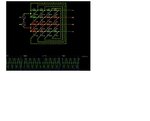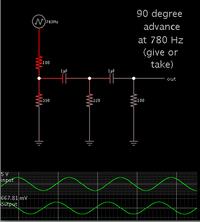moeen
Newbie level 6

hello all ,
please I need to design 90 degrees phase shift circuit for a sine wave input , but the amplitude of output nearly the same amplitude of input signal , Please i need the typical circuit of these specification .
please I need to design 90 degrees phase shift circuit for a sine wave input , but the amplitude of output nearly the same amplitude of input signal , Please i need the typical circuit of these specification .





